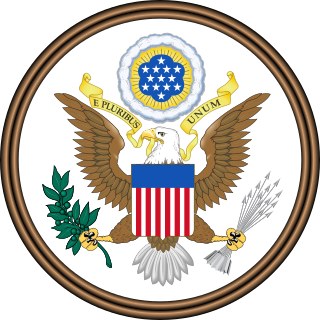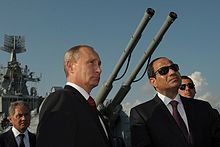
Daniel Ellsberg is an American political activist, and former United States military analyst. While employed by the RAND Corporation, Ellsberg precipitated a national political controversy in 1971 when he released the Pentagon Papers, a top-secret Pentagon study of the U.S. government decision-making in relation to the Vietnam War, to The New York Times, The Washington Post and other newspapers.

The Espionage Act of 1917 is a United States federal law enacted on June 15, 1917, shortly after the United States entered World War I. It has been amended numerous times over the years. It was originally found in Title 50 of the U.S. Code but is now found under Title 18. Specifically, it is 18 U.S.C. ch. 37

The Main Directorate of the General Staff of the Armed Forces of the Russian Federation, formerly the Main Intelligence Directorate, and still commonly known by its previous abbreviation GRU, is the foreign military intelligence agency of the General Staff of the Armed Forces of the Russian Federation. The GRU controls the military intelligence service and maintains its own special forces units.

Lloyd James Austin III is a retired United States Army four-star general who, since his appointment on January 22, 2021, has served as the 28th United States Secretary of Defense. He is the first African American to serve as the United States Secretary of Defense. Austin previously served as the 12th commander of United States Central Command (CENTCOM) from 2013 to 2016.

Cyberwarfare is the use of cyber attacks against an enemy state, causing comparable harm to actual warfare and/or disrupting vital computer systems. Some intended outcomes could be espionage, sabotage, propaganda, manipulation or economic warfare.

Russia and the United States maintain one of the most important, critical and strategic foreign relations in the world. Both nations have shared interests in nuclear safety and security, nonproliferation, counterterrorism, and space exploration.

WikiLeaks is an NGO owned by Icelandic company Sunshine Press Productions ehf that runs a website that has published news leaks and classified media provided by anonymous sources. It was founded by Julian Assange, an Australian editor, publisher, and activist, who is currently fighting extradition to the United States over his work with WikiLeaks. Since September 2018, Kristinn Hrafnsson has served as its editor-in-chief. Its website stated in 2015 that it had released online 10 million documents since beginning in 2006 in Iceland. WikiLeaks' most recent publication was in 2021 and its most recent publication of original documents was in 2019. Beginning in November 2022, many of the documents could not be accessed.

The United States officially recognized the independence of Ukraine on December 25, 1991. The United States upgraded its consulate in the capital, Kyiv, to embassy status on January 21, 1992. In 2002, relations between the United States and Ukraine deteriorated after one of the recordings made during the Cassette Scandal revealed an alleged transfer of a sophisticated Ukrainian defense system to Saddam Hussein's Iraq.

The Pentagon is the headquarters building of the United States Department of Defense, in Arlington County, Virginia, across the Potomac River from Washington, D.C. It was constructed on an accelerated schedule during World War II. As a symbol of the U.S. military, the phrase The Pentagon is often used as a metonym for the Department of Defense and its leadership.

Evelyn Nicolette Farkas is an American national security advisor, author, and foreign policy analyst. She is the current Executive Director of the McCain Institute, a nonprofit focused on democracy, human rights, and character-driven leadership.
Cyberwarfare by Russia includes denial of service attacks, hacker attacks, dissemination of disinformation and propaganda, participation of state-sponsored teams in political blogs, internet surveillance using SORM technology, persecution of cyber-dissidents and other active measures. According to investigative journalist Andrei Soldatov, some of these activities were coordinated by the Russian signals intelligence, which was part of the FSB and formerly a part of the 16th KGB department. An analysis by the Defense Intelligence Agency in 2017 outlines Russia's view of "Information Countermeasures" or IPb as "strategically decisive and critically important to control its domestic populace and influence adversary states", dividing 'Information Countermeasures' into two categories of "Informational-Technical" and "Informational-Psychological" groups. The former encompasses network operations relating to defense, attack, and exploitation and the latter to "attempts to change people's behavior or beliefs in favor of Russian governmental objectives."
The Afghan War documents leak, also called the Afghan War Diary, is the disclosure of a collection of internal U.S. military logs of the War in Afghanistan, which were published by WikiLeaks on 25 July 2010. The logs consist of over 91,000 Afghan War documents, covering the period between January 2004 and December 2009. Most of the documents are classified secret. As of 28 July 2010, only 75,000 of the documents have been released to the public, a move which WikiLeaks says is "part of a harm minimization process demanded by [the] source". Prior to releasing the initial 75,000 documents, WikiLeaks made the logs available to The Guardian, The New York Times and Der Spiegel in its German and English online edition, which published reports in line with an agreement made earlier the same day, 25 July 2010.

Donald Trump's handling of government records, especially those containing classified information, during his presidency has come under scrutiny. A number of incidents in which the president disclosed classified information to foreign powers and private individuals have become publicly known, sometimes with distinct national security and diplomatic consequences.

The Wagner Group, also known as PMC Wagner, is a Russian paramilitary organization. It is variously described as a private military company (PMC), a network of mercenaries, or a de facto private army of Russian President Vladimir Putin. The group operates beyond the law in Russia, where private military contractors are officially forbidden. While the Wagner Group itself is not ideologically driven, various elements of Wagner have been linked to neo-Nazism and far-right extremism.
Amanda Macias is an American journalist who reports on national security subjects for CNBC.

The Pentagon UFO videos are selected visual recordings of cockpit instrumentation displays from United States Navy fighter jets based aboard aircraft carriers USS Nimitz and USS Theodore Roosevelt in 2004, 2014 and 2015, with additional footage taken by other Navy personnel in 2019. The four grainy, monochromic videos, widely characterized as officially documenting UFOs, have received extensive coverage in the media since 2017. The Pentagon later addressed and officially released the first three videos of unidentified aerial phenomena (UAP) in 2020, and confirmed the provenance of the leaked 2019 videos in two statements made in 2021.

The Battle of Bakhmut is an ongoing series of military engagements in and near the city of Bakhmut between Ukrainian Armed Forces and the Russian Armed Forces during the larger battle for Donbas. While the shelling of Bakhmut began in May 2022, the main assault towards the city started on 1 August after Russian forces advanced from the Popasna direction, following a Ukrainian withdrawal from that front. The main assault force primarily consists of mercenaries from the Russian paramilitary organization Wagner Group, supported by regular Russian troops and DPR and LPR separatist elements.
During the Russian invasion of Ukraine, which began on 24 February 2022, the possibility of Russia using tactical nuclear weapons, and the risk of broader nuclear escalation, has been widely discussed by commentators and in the media. Several senior Russian politicians, including president Vladimir Putin, former president and party leader Dmitry Medvedev, and foreign minister Sergey Lavrov, have made a number of statements widely seen as threatening the use of nuclear weapons.

On 26 September 2022, a series of clandestine bombings and subsequent underwater gas leaks occurred on the Nord Stream 1 and Nord Stream 2 natural gas pipelines. Both pipelines were built to transport natural gas from Russia to Germany through the Baltic Sea, and are majority owned by the Russian majority state-owned gas company, Gazprom. The perpetrators' identities and the motives behind the sabotage remain debated.


















